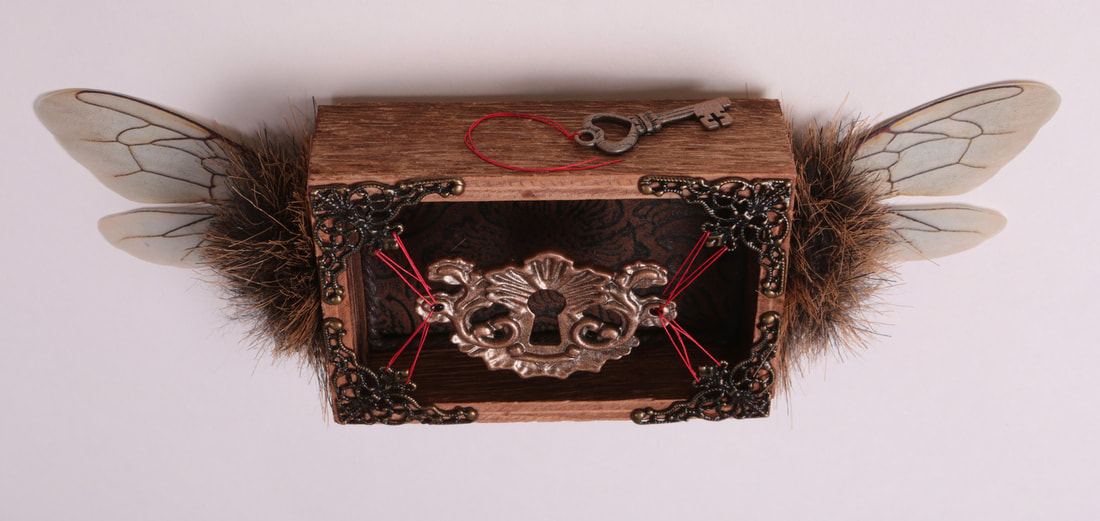hive gallery
an ongoing series of bee-themed, mixed-media and assemblage small works.
Right and Left
mixed-media 4"h x5"w x1.5"d 2019 sold Almost Home
mixed-media 4.75"x3.25" 2019 sold They Just Clicked
mixed-media 4.5"x10" 2018 sold Seeing Red
mixed-media 2.5"x7" 2018 sold They Still Fit
mixed-media 5"x11" 2018 sold Very Different Circles One
mixed-media 3"x4.5" 2018 sold Very Different Circles Two
mixed-media 3"x4.5" 2018 sold |
The Bee Keepers
mixed-media 3"x4" 2016
sold
mixed-media 3"x4" 2016
sold
Holiday Heck (one)
mixed-media 3"x6" 2016
sold
mixed-media 3"x6" 2016
sold
Holiday Heck (two)
mixed-media 3"x6" 2016
sold
mixed-media 3"x6" 2016
sold
Hamster Acting Up Again
mixed-media 3"x7" 2016
sold
mixed-media 3"x7" 2016
sold
We share our planet with nearly 20,000 known species of bees. Study of these creatures continues to reveal further connections between bees and people; Humanity does not stand apart from these petite wonders of our natural world. We rise and fall, together.
Partnerships between humans and bees attest to this reality. Our symbiotic relationships with the bees has evolved over thousands of years, and it is commonly stated; if they go, we go. As pollinators, bees are vital in our massive efforts toward food production, a fact we understand only too well, in California’s Central Valley. Habitat loss, rising temperatures, varroa mites, neonicotinoids and other pesticides --such combined factors threaten the stability of bee populations, increasing likelihood of Colony Collapse Disorder, and thus threatening food production --threatening our own populations, in turn.
Partnerships between humans and bees attest to this reality. Our symbiotic relationships with the bees has evolved over thousands of years, and it is commonly stated; if they go, we go. As pollinators, bees are vital in our massive efforts toward food production, a fact we understand only too well, in California’s Central Valley. Habitat loss, rising temperatures, varroa mites, neonicotinoids and other pesticides --such combined factors threaten the stability of bee populations, increasing likelihood of Colony Collapse Disorder, and thus threatening food production --threatening our own populations, in turn.


























